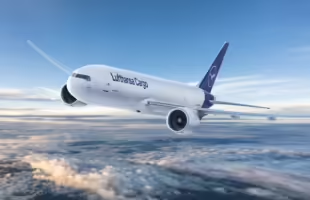Despite a slight decline in transported cargo volume, Lufthansa Cargo said it was able to maintain its capacity utilisation last year with a cargo load factor of 69.7 per cent (2013: 69.9 per cent). Faced by tough competition, the cargo airline transported around 1.7 million tonnes of freight and mail in 2014, posting a slight year-on-year decline of -2.7 per cent.
In the past financial year, Lufthansa Cargo focused on a flexible and demand-driven management of its capacities with the aim of boosting yields. At the same time, the freight airline invested in its network for its customers, adding Milan in Italy, Lagos in Nigeria and the Tunisian capital Tunis to its destinations. In addition, business with key sectors like the oil and gas industry played a stronger role for Lufthansa Cargo.
“Competition on the market was very fierce again last year”, says Peter Gerber, chairman of the executive board and CEO of Lufthansa Cargo. “The fact that we continue to fly in this environment with an unchanged high capacity utilisation rate, testifies to the success of our network management and strength of our global offerings and sales.”
Gerber’s forecast for the coming year is cautiously optimistic: “Despite the still difficult framework conditions, Lufthansa Cargo pursued its future program Lufthansa Cargo 2020 with great determination in the past financial year.”
A new IT system for cargo handling is being rolled out world-wide, marketing of lucrative express products further reinforced, and preparations for the new air freight terminal in Frankfurt, LCCneo, are in full swing. As another milestone of Lufthansa Cargo 2020, he also singled out the launch of a strategic joint venture with All Nippon Airways (ANA) on routes between Japan and Europe. This is to ensure further growth on the important routes between the two major economic regions, the company said.







